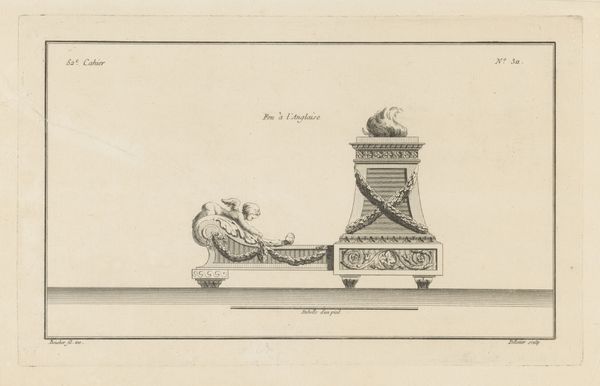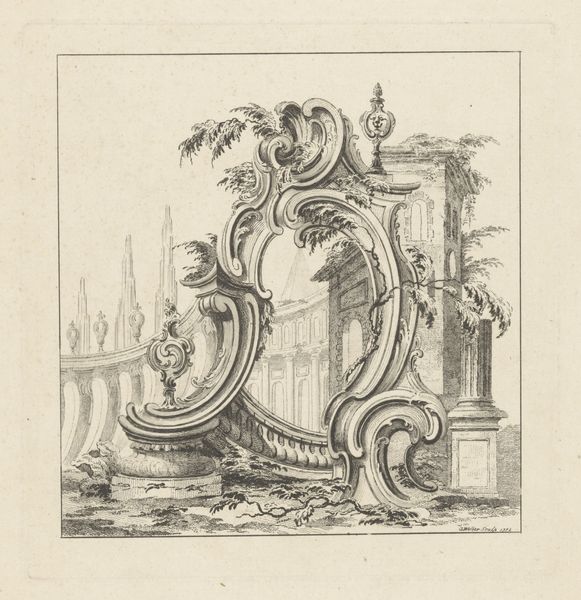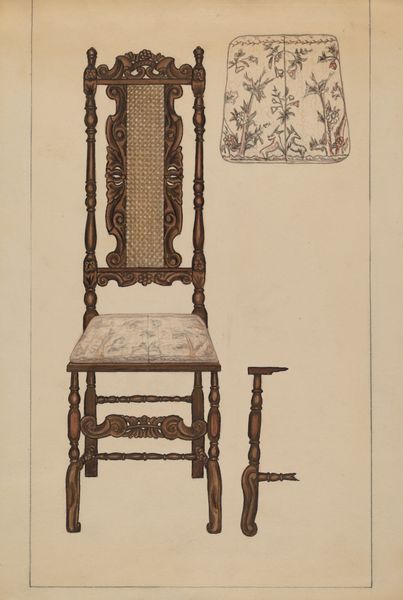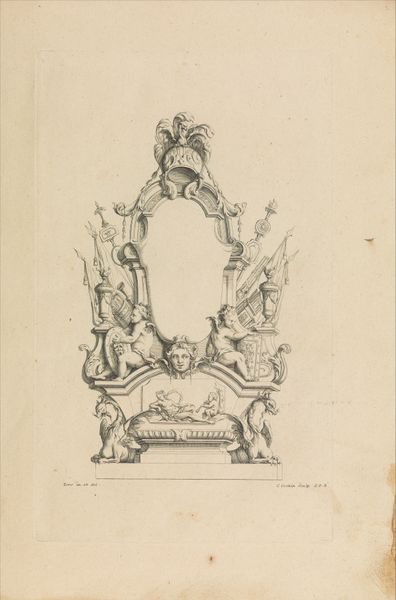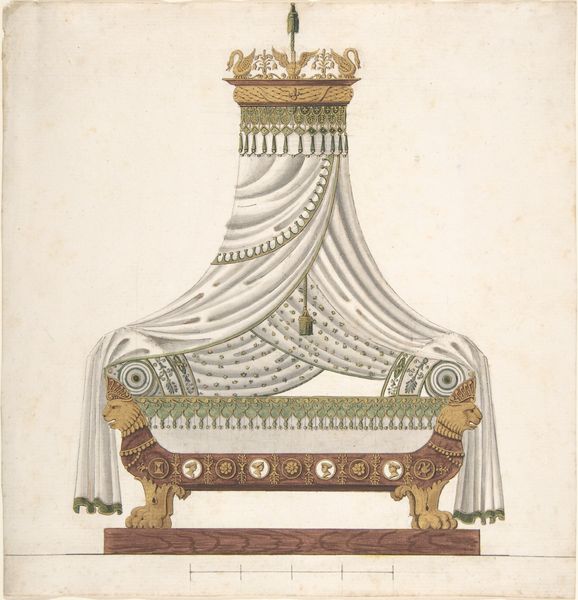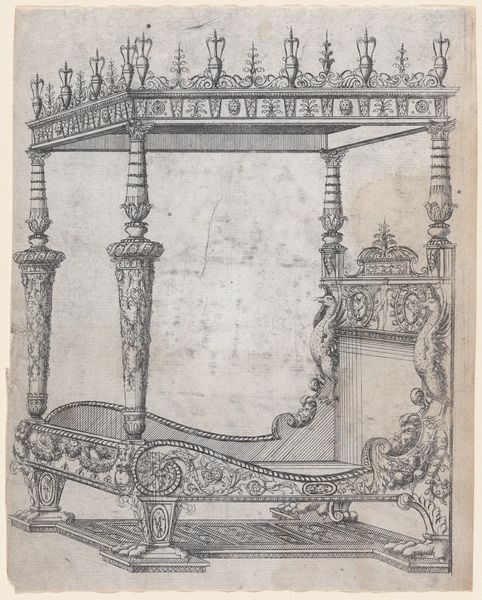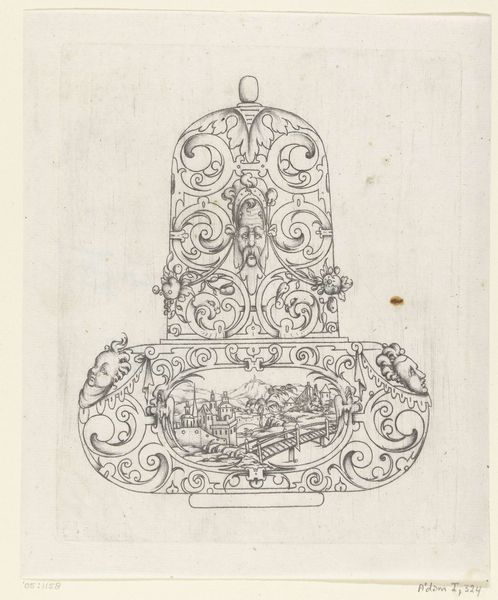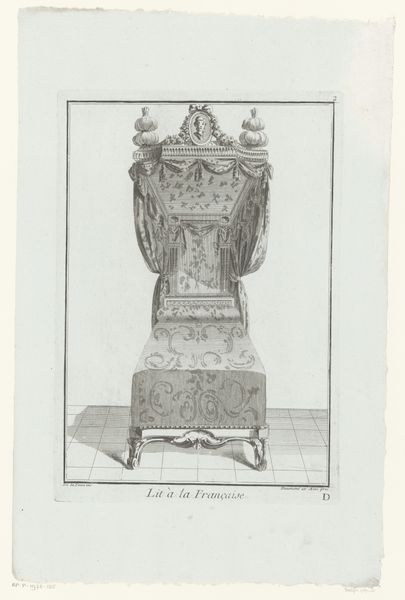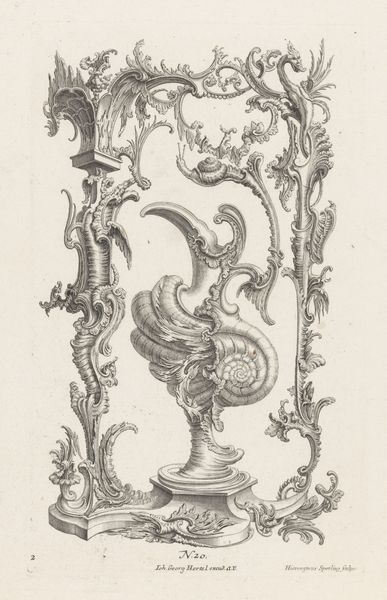
Side View of The Cradle of His Majesty the King of Rome 1805 - 1815
0:00
0:00
drawing, print
#
portrait
#
drawing
#
neoclacissism
# print
#
figuration
#
history-painting
#
decorative-art
Dimensions: Sheet: 12 1/8 × 8 1/8 in. (30.8 × 20.7 cm)
Copyright: Public Domain
Adrien Louis Marie Cavelier produced this side view of the Cradle of His Majesty the King of Rome as a design for an imperial commission. This drawing gives us insight into the aesthetics of power during the Napoleonic era. Consider the historical context. In the early 19th century, France was undergoing significant political and social change, with Napoleon seeking to legitimize his dynasty through visual symbols of grandeur and stability. The design is rife with classical motifs that hearken back to the Roman Empire, projecting an image of power and continuity. The eagle, the angel, and the laurel wreath speak to cultural references. The very creation of such an ornate cradle highlights the importance placed on lineage and succession in maintaining political control. This drawing tells us something about the social conditions in which art is made, showing how art served the interests of the state. To understand this image better, we can consult historical records, design archives, and period publications. Through this research, we can appreciate how the art of the time was part of a broader project to create a lasting legacy.
Comments
No comments
Be the first to comment and join the conversation on the ultimate creative platform.
